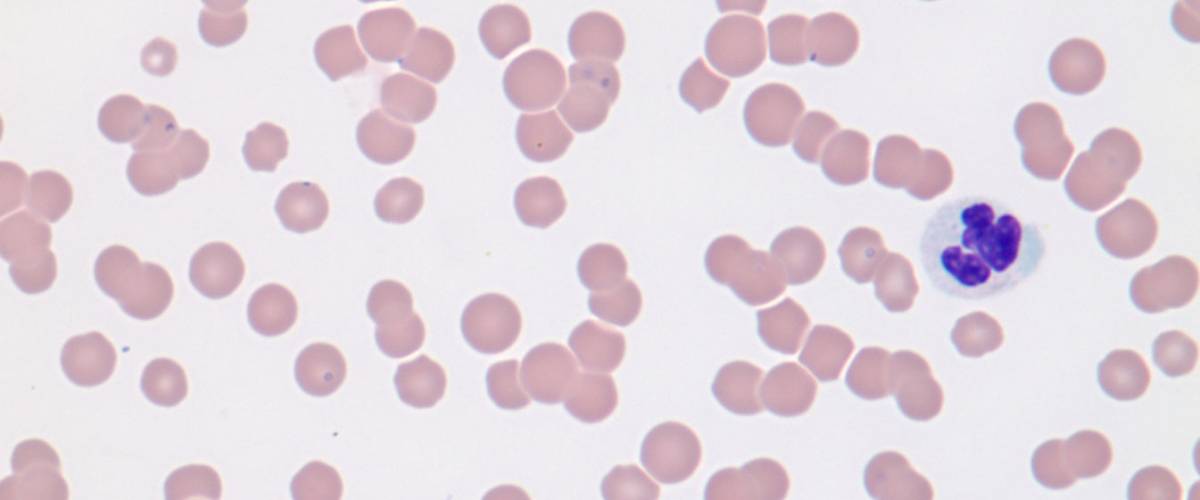
July 12, 2018 – Spending time outdoors with our pets is one of the great perks of being a pet parent. But there often is a price to pay for that fun-in the-sun time – the maddening company of a host of annoying insects. Not only can insects drive us and our furry companions a little crazy, they can carry dangerous, infectious organisms that flourish in the bloodstream causing serious and sometimes life-threatening illnesses.
Many disease-causing organisms that end up in the bloodstream of our pets are transmitted by biting flies, ticks and mosquitoes. Although the list of parasites, bacteria and viruses that can infect our pets is long, here are a few that highlight the global problem of these types of infectious diseases.
Cytauxzoonosis – an emerging threat to cats
Feline cytauxzoonosis is caused by a tick-transmitted protozoan, Cytauxzoon felis. Although the disease was first reported just over 40 years ago, it was rarely diagnosed and was confined to a small region of the south-central United States. However, in the last two decades the disease has spread to many states throughout the southern United States, extending as far as north and west as Virginia, Ohio and Nebraska.
The parasite invades and destroys both red and white blood cells and often is diagnosed by visualizing the parasite in red cells. The infected white blood cells also block blood vessels, leading to multi-organ failure. Cats infected with C. felis become suddenly and severely ill, and many cats die in despite aggressive treatment. The disease was considered almost 100 percent fatal several years ago, but improved treatment options have helped increase the numbers of cats to survive infection with this serious parasite. The best way to prevent the disease is to avoid areas where cats can encounter disease-carrying ticks.
Babesiosis – a global health problem of dogs
Babesiosis was first recognized as a disease in dogs over 100 years ago. There are many species of Babesia distributed around the world capable of causing disease in lots of different animals, from cattle to dogs and cats to horses.
Babesia organisms invade red blood cells, stimulating an immune response by the infected animal that ultimately destroys the red blood cells, causing anemia and ultimately organ failure. The most common clinical signs seen in dogs are anorexia, fever and weakness, signs consistent with anemia. Babesiosis is usually easy to diagnose – the organisms can be seen on routine blood smears in some cases and there are genetic tests using polymerase chain reaction that are very sensitive. Babesiosis is treatable but can be expensive, and although a vaccine is available outside the United States, its effectiveness is questionable. Tick control is the most important preventive measure available to owners.
Heartworm disease – an old foe continues to threaten dogs and cats
Heartworm was first described in dogs in the United States just shy of 200 years ago and heartworm disease remains a serious problem. Once confined to the southeast United States, the parasite has now been diagnosed in all 50 states. Although typically thought of as a parasite of dogs, heartworm is increasingly being diagnosed in cats, even those that live indoors!
Heartworm disease is spread by mosquitoes that transmit the larval forms of Dirofilaria immitis, the worm that causes disease.
Although dogs and cats share the same parasite, some of the clinical signs of heartworm disease are very different between the two. Coughing is the most common sign of infection in both dogs and cats, but vomiting is the second most common sign reported in cats. In dogs, exercise intolerance is the next most common sign of infection.
There are several tests used to diagnose heartworm disease in pets, and in many cases a combination of tests is required to pin down the diagnosis in both dogs and cats.
Treatment of the disease in both dogs and cats is available but can be costly and is associated with side effects. Prevention remains the very best way to treat heartworm disease in both species. There are many different preventive therapies available for both dogs and cats. Your veterinarian can help you decide what is best for your pet.
Equine anaplasmosis – a tick-transmitted disease of white blood cells
Equine anaplasmosis is caused by the bacteria Anaplasma phagocytophila. This tiny organism gets into the blood stream and invades white blood cells. Signs of infection include fever, lameness, stiffness and jaundice. Once confined to Northern California, the disease has spread across the United States.
The good news for horse owners is that the disease is easily diagnosed and antibiotic therapy is very effective. Unlike some other bacterial diseases, there is no vaccine for equine anaplasmosis, making tick control the only preventive for this disease.
Fighting back
Morris Animal Foundation has been active in funding studies focused on infectious diseases for almost the entirety of our 70-year history. From funding some of the first studies looking at canine parvovirus and Potomac Horse fever to our most recent studies on feline panleukopenia virus in cats, to foal pneumonia to peste-des-petits-ruminants in the endangered Saiga antelope, the Foundation remains on the cutting edge of research and technology in both emerging threats and old foes.
Learn more about all our active infectious disease focused grants and our great work on behalf of animals everywhere!



